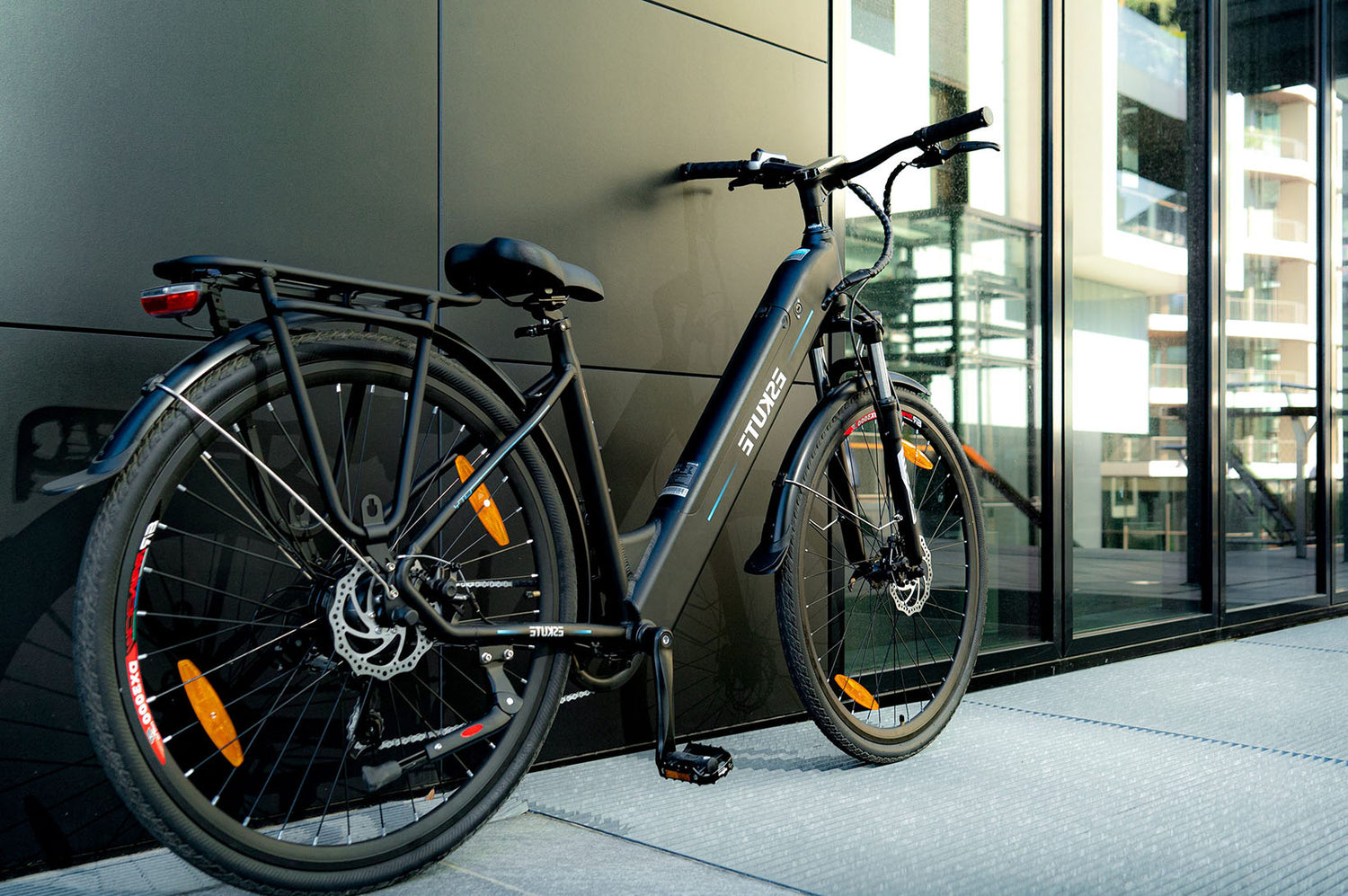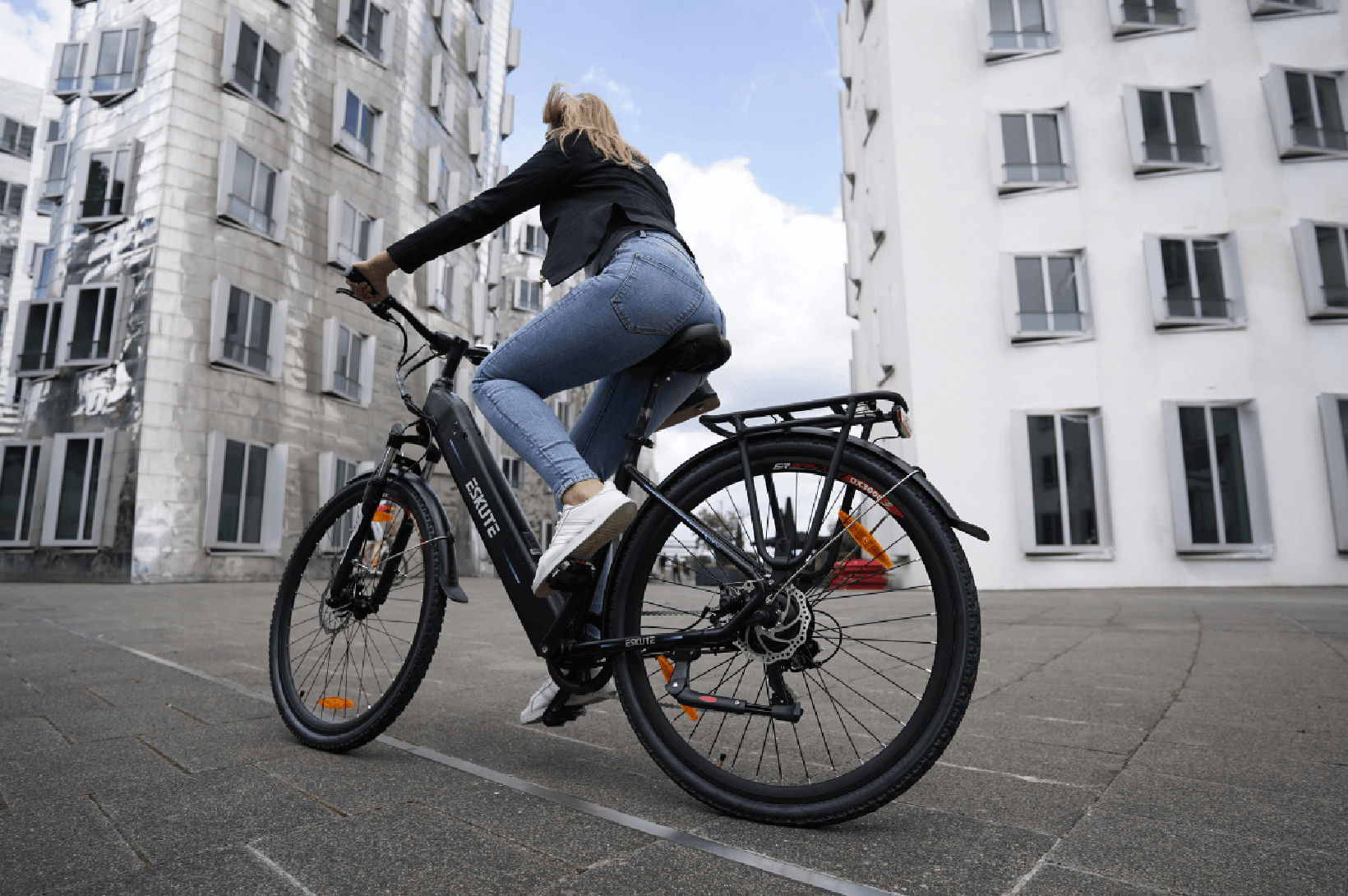This blog post will break down an electric bike's basic components and show why it's the perfect partner for a cycling enthusiast like yourself. So, please sit back, relax, and let's dive into understanding e-bikes together.
How Does an Electric Bike Work?
An electric bike uses a battery-powered motor to assist the rider with pedalling. The motor helps propel the bike forward, providing additional power and speed that would otherwise have to be supplied entirely by the rider. The amount of assistance given is determined by several factors, including the size of the motor, its wattage rating, and what terrain is being ridden.
Basic Components in An Electric Bike
Aside from the main components like the motor, sensor, and battery, many electric bikes have an array of additional components that can improve your experience. For example, a display panel is often included with electric bikes to show your speed and the amount of power you use.
The extra components give you more control over how much power you use, so you can conserve it or push yourself a little further. You may also find additional features such as a built-in lighting system, a USB charging port for personal devices, and even a GPS tracker. These extras make your electric bike experience much more enjoyable and hassle-free.
Electric Bike Batteries

An electric bike's battery often ranges up to 40-80 miles and can be recharged in about four hours with a normal household outlet. The range largely depends on the battery's capacity; the larger, the longer. Several types of electric bikes are available, from lightweight folding models to mountain bikes suitable for tackling steep trails.
With some models, you can even vary the level of assistance the motor provides. In addition to providing more power, electric bikes are also great for those who want to save on fuel expenses or reduce their environmental impact. Electric bikes can be a great alternative to driving short distances, with some models capable of reaching speeds similar to an automobile.
Electric Bike Motors
Electric bike motors are typically either hub-mounted or mid-mounted. Hub-mounted motors are located in the centre of the wheel and can provide a more efficient power output than mid-mounted motors. However, they also add some weight to the bike, which may decrease its portability for those who need to take their electric bike on public transportation. Mid-mounted motors are located near the bottom bracket of the bike and do not add too much additional weight, which makes a more balanced and natural riding experience. Both motors are relatively quiet, making them great for urban settings where noise pollution may be an issue.
Electric Bike Sensor
Electric Bike Sensors are becoming more and more important for cyclists. With their help, riders can easily monitor the performance of their bicycles and make adjustments to improve them, which allows them to become faster, stronger, and safer on the roads. Not only that, but electric bike sensors also provide data about the environment around them – like air pressure, temperature, and wind speed – so users can be more aware of the weather conditions before they take off.
Furthermore, electric bike sensors can also be used to track a user's activity – like speed and distance – making it easier for riders to stay motivated and monitor their progress. In short, electric bike sensors are a great way for cyclists to get the most out of their rides!
Additional Components in Electric Bikes
In addition to the motor and battery, electric bikes also have other components that help make riding safer and more comfortable. Most electric bikes have a headlight, taillight, and reflectors for increased visibility when riding in low light. Some models also come with suspension forks or a rear shock absorber to help cushion the rider from bumps in the road. You can add fenders to keep you dry on rainy days, and racks are available to carry bags and other items.
Electric Bike Wattage Explained
Wattage can be one of the most important factors to consider when looking for an electric bike. Here's why: Wattage determines how much power your electric bike will have.
The higher the wattage, the more power and speed your bike will generate – meaning you can enjoy longer rides and faster speeds when you're ready to hit the trail.
When shopping for an electric bike, it's important to look at wattage readings and compare them with different models – typically, the higher, the better.
Don't forget to factor in budget, too – some high-powered electric bikes are more expensive than others, so be sure to find one that also fits your wallet. So, when looking for an electric bike, look into the wattage and decide what works best for you – it could be the difference between a great ride and a mediocre one!
Electric Bike Voltage Explained

Regarding electric bikes, voltage is one of the most important things you need to understand. The higher the voltage of an e-bike battery, the more powerful and faster your bike will be – but that doesn't mean you should always go for the highest voltage available.
It's important to know what sort of riding you'll do to ensure you get the right voltage for your electric bike. For instance, if you're likely to do a lot of hill climbing, you'll need a higher voltage battery, allowing you to climb more easily. But a lower-voltage battery should suffice if you mainly ride on flat terrain.
The other thing to remember is that higher voltage batteries also tend to be heavier and can affect the range of your electric bike. If you want to go longer distances, consider a lower-voltage battery, as it will give you more power without compromising weight or range.
Understanding electric bike voltage is essential to get the right e-bike for your needs. Knowing what sort of riding you're likely to do can help you decide on the best voltage for your battery and ensure that you get an electric bike that will work for you. So, make sure to do some research before making your purchase – it could make all the difference!
Electric Bike Amp-Hours Explained
One of the biggest benefits of an electric bike is its ability to cover long distances. But how do you know exactly how far you can go on a single charge? The answer lies in Amp-hours, or Ah for short. This measure tells you the capacity of your battery, giving you a good idea of what range to expect from your ride.
Ah is a measure of electrical charge and will usually be displayed in numbers such as 10Ah or 20 Ah. This means that your battery can store up to 10 or 20 hours' worth of electricity. When looking for an electric bike, it's important to consider the Amp-hours as this will give you an idea of the range you can expect.
For example, an ebike with 10Ah will likely have a shorter range than one with 20Ah. Generally speaking, the higher the Ah, the more power your battery has and the further you can go on a single charge. However, it's important to note that the actual range depends on several factors, including how much you weigh and the terrain you're riding on.
So if you're looking for an ebike with a longer range, look for one with a higher Ah rating. Knowing your Amp-hours can help ensure that your electric bike is equipped with the right battery for your needs. With this knowledge in hand, you'll be able to find an ebike that's perfect for your next ride!

Final words
An electric bike is a great option if you're looking for an efficient, cost-effective, and eco-friendly mode of transportation. And now that you understand how they work, you can feel confident riding one yourself! So what are you waiting for? Head over to Eskute and grab an ebike today.





Leave a comment
This site is protected by reCAPTCHA and the Google Privacy Policy and Terms of Service apply.